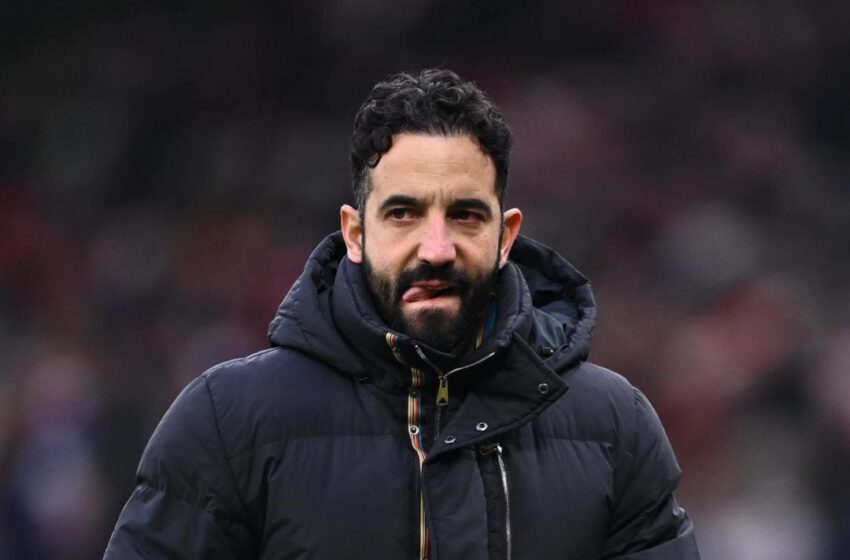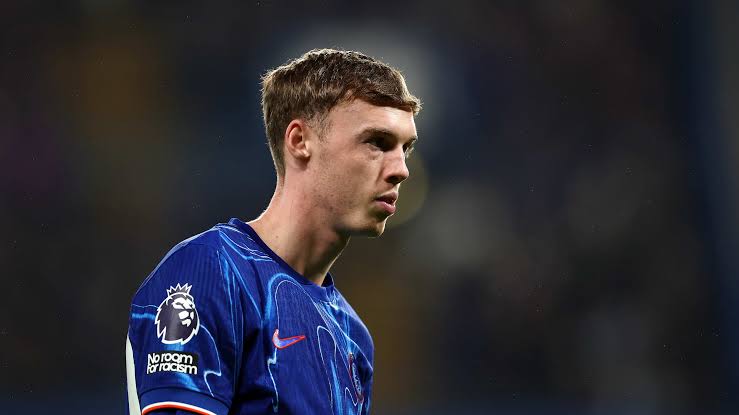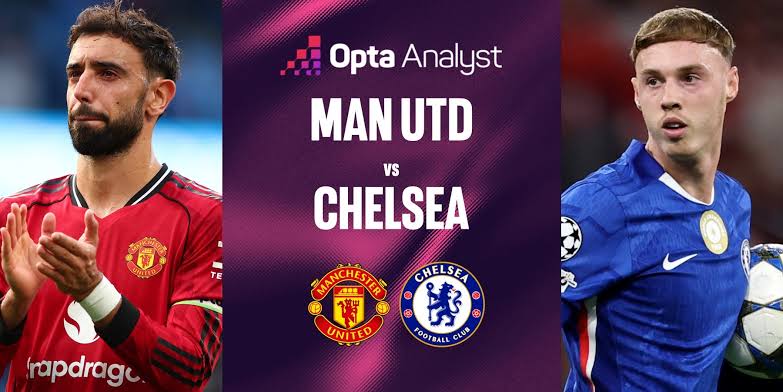Five transformations Ruben Amorim has brought to Man United

Manchester United head coach, Rúben Amorim. Photo Credit- Goal.com
When Ruben Amorim arrived at Manchester United in November 2024, the club was languishing in 13th place in the Premier League, a shadow of its former glory. The Portuguese tactician, fresh from ending Sporting CP’s 19-year title drought, was tasked with reviving a sleeping giant. Despite a turbulent start; 14 wins, 13 losses in 34 games by April 2025, Amorim has begun to imprint his vision on the Red Devils. Drawing from his tactical ability, candid communication, and relentless drive for team identity, this piece is set to explore five pivotal changes Amorim has introduced that are reshaping Manchester United.
A defined 3-4-2-1 tactical formation
Amorim’s unwavering commitment to his 3-4-2-1 formation has been a cornerstone of his tenure, marking a departure from the tactical ambiguity under Erik ten Hag. At Sporting, his back-three system delivered defensive solidity and attacking dynamism, and he’s sought to replicate this at United. Opta data shows United’s possession has risen from 53% under Ten Hag to 57% under Amorim, reflecting a shift toward controlled, structured play. His team now presses with a 4-4-2 shape out of possession, closing up spaces, as seen in their spirited 0-0 draw at Old Trafford, where Manchester City failed to complete an open-play cross into the box. While the system’s implementation has been shaky, with 56% of United’s 16 conceded Premier League goals under Amorim coming from crosses, the Anfield performance showcased its potential. By stabilizing the backline with players like Matthijs de Ligt and Lisandro Martinez, Amorim is forging a tactical identity that prioritizes collective effort over individual flair, a stark contrast to United’s disjointed past.
Amorim’s brutal honesty and cultural reset
Amorim’s sharp communication style has jolted United’s culture, fostering accountability in a dressing room long plagued by underperformance. His now-infamous remark after a 3-1 loss to Brighton in January 2025, calling his side “maybe the worst team in the history” of the club, sent shockwaves through Old Trafford. Though clarified as a critique of his own impact, it underscored his refusal to sugarcoat reality a trait lauded by players like Diogo Dalot, who said Amorim’s calls for leaders to “step up” after the Liverpool draw “pinched” him into action. Unlike Ten Hag’s reserved approach, Amorim’s honesty, rooted in his Sporting days where he unified a fractured club, has united players. His decision to loan out Marcus Rashford and Antony, citing them as unfit for his system, further signals a no-nonsense principle. This cultural reset, while divisive, is building a foundation where results, not reputation, dictate roles.
RELATED STORIES
Opinion: Did Erik ten Hag Destroy Manchester United?
What Amorim, United Need: Players Overhaul or Tactics Change?
Fergie Time: Five most impossible comebacks in United history
Empowering young talents and tactical flexibility
Amorim’s track record of nurturing talents like Goncalo Inacio and Geovany Quenda at Sporting has translated to United, where he has given young players like Kobbie Mainoo and Alejandro Garnacho central roles. His faith in Amad Diallo has been particularly transformative, with the Ivorian contributing to eight of United’s 11 Premier League goals under Amorim (three goals, five assists) and completing 21 dribbles. Tactically, Ruben Amorim has shown adaptability within his system, switching roles to suit players ability. For instance, shifting Diallo from right wing-back to a proper No. 10 and encouraging Diogo Dalot’s adventurous attacks against Liverpool (70 touches, targeting Trent Alexander-Arnold) reflect a willingness to evolve. By reducing lineup changes from four to three per game post-Bournemouth, he is building rhythm, allowing young stars to shine while embedding his principles. This blend of youth and flexibility is laying the groundwork for a sustainable future.
Amorim’s relentless focus on physicality and pressing
Amorim’s Sporting sides were renowned for their high-energy pressing, a trait he’s working to instill at United despite initial struggles. Opta data reveals a dip in high turnovers (83 to 56) and pressed sequences (128 to 100) compared to Ten Hag’s nine-game stint, alongside a slight drop in total distance run (976.2km to 966.5km). Yet, Amorim attributes this to insufficient training time and a squad not yet suited to his demands. His call for players to run “like mad dogs,” exemplified by Harry Maguire’s 104-minute effort at Arsenal despite illness, has sparked moments of intensity, like the 10-man defensive stand against Arsenal’s five attackers. To counter fitness concerns, Ruben Amorim uses performance data to manage player loads, resting those in the “red zone” to avoid injuries that plagued Ten Hag’s tenure. This focus on physicality, though a work in progress, is shifting United toward a more cohesive, aggressive unit.
Strategic squad overhaul and transfer vision
Amorim’s arrival mid-season limited his immediate squad influence, but his strategic decisions signal a long-term rebuild. By loaning out Rashford and Antony and integrating January signings like wing-back Patrick Dorgu and young center-back Ayden Heaven, he has begun addressing positional gaps. His comments in April 2025 about needing “one or two big players” to fill squad deficiencies not necessarily stars but impactful fits like Matheus Cunha shows a pragmatic approach aligned with INEOS’s vision. Unlike Ten Hag’s sporadic signings, Amorim’s transfer strategy, backed by CEO Omar Berrada and technical director Jason Wilcox, prioritizes players suited to his 3-4-2-1, such as dynamic wing-backs and a clinical striker to complement Rasmus Hojlund. His revival of Casemiro, once sidelined but now a regular, shows he can maximize existing talent while planning for a big summer transfer. This blend of immediate twists and future planning is steering United toward a squad built for purpose.
What more could happen in the Amorim’s era
Amorim’s impact, while not yet reflected in consistent results as United sit 14th in the Premier League has sparked a cultural and tactical revolution. His 3-4-2-1 system, though imperfectly implemented, offers a clear blueprint, addressing the lack of identity that plagued Ten Hag’s era. His honesty, youth focus, and physical demands are pushing players to adapt or depart, fostering accountability. The strategic sale of United current squad, backed by INEOS’s infrastructure, promises a brighter future, even if the present is filled with “suffering,” as Ruben Amorim noted in November 2024. Social media sentiment reflects careful optimism, with fans praising his “clear principles” and “bold changes” while acknowledging the need for patience and support.
Conclusion
The tenure of Ruben Amorim at Manchester United is a high-stakes gamble, but his five transformative changes: tactical clarity, cultural honesty, youth empowerment, physical intensity, and strategic recruitment are planting seeds for revival. The road to reclaiming Premier League glory is long, but as Amorim navigates the storm he predicted, his vision is giving United something they have lacked for over a decade: a sense of purpose. Only time will tell, but the foundations are being laid.




